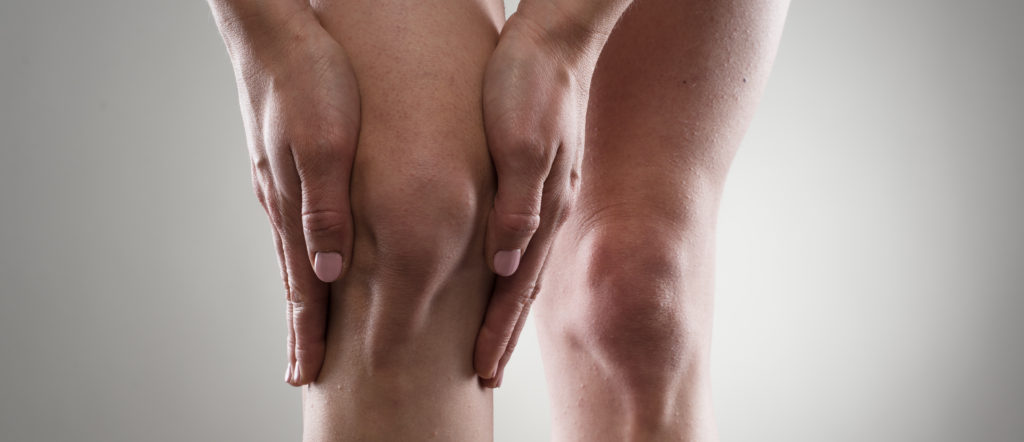Bone & Joint Health
The Weather And Joint Pain. Why?
We’ve all heard the old wives tale about joint pain and bad weather. You many have an aunt or uncle who swears that their aching joints mean some bad weather is soon to follow. But that couldn’t be right, could it? Surely it was all in their head.
Turns out, maybe it wasn’t.
In 2007, researchers at Tufts University in Boston found that every 10-degree drop in temperature corresponded with an incremental increase in arthritis pain1. This means that when the temperature changed, there was a noticeable increase in the joint pain felt by those with arthritis. Since then, other studies have found the same thing. So it turns out, it wasn’t just an old wives tale.
Shop Forté Joint Support Supplement
Who can predict the weather?
Weather-related joint pain is usually seen in patients with osteoarthritis, rheumatoid arthritis, and other arthritic conditions2. Technically, it can affect any load-bearing joint. It is most common in the hips, knees, elbows, shoulders, and hands2. Joints contain special sensory nerves called baroreceptors which respond to changes in pressure in the atmosphere. This seems to be where all the excitement happens.
How does it work?
There are lots of theories behind why people and joint pain can ‘feel’ bad weather. The most plausible one seems to be that there is a relationship between your joints and barometric pressure. Simply, barometric pressure is another way of saying atmospheric pressure.
High barometric pressure is thought to push against the body from the outside which stops the tissues in the joints from expanding. Low barometric pressures push less against the body, allowing tissues to expand. This expansion is apparently what causes the pain. Cold weather brings with it a lower air pressure. This might result in the microscopic sensations people feel in their joints as the temperature falls. Yet, the key is that barometric pressure often falls before we see visual changes in the weather. This might explain why joint pain sufferers seem like oracles.
There is still no consensus on this theory but it seems to be one favored by many researchers.
So is it time to pack up and move to Florida?
Not just yet. There is no denying that people with joint pain usually feel more stiffness and discomfort during cold weather. There’s always the hope that if you could just move to a sunnier climate you might be better off. While this is true in theory, it may not necessarily work out in practice.
One study found that even people living in San Diego reported weather-related joint pain. In fact, they reported more pain than residents of three colder cities: Nashville, Boston, and Worcester, Massachusetts3.
As one doctor said “Chronic pain doesn’t care where you live, humidity and barometric pressure change everywhere”3. Even in sunnier climates, the air pressure changes. If the theory is to be believed, it is the changes in the barometric pressure and not the weather itself that affects joint pain.
While there is a possibility that joint pain might improve in sunnier climes, that’s not always the case4.
Shop Forté Nerve Health Supplement
You can’t change the weather forecast but you can lessen its impact
For those with worsening pain in cold weather, consider the following tips to help ease the pain.
- Stay warm. It goes without saying that doing what you can to stay warm can make you more comfortable and ease the pain. Here are a few things to try:
- Dress in layers. Wear extra layers over your knees and legs, such as tights or leggings.
- Keep your home well heated
- Try sleeping under an electrical blanket
- Wear extra pairs of gloves or socks when leaving the house (Thermal socks work wonders).
- Try heating pads which can be applied directly to the affected joints.
- Stay hydrated. Even mild dehydration might make you more sensitive to pain.
- Stay active. Staying active and keeping muscles strong around damaged joints will help in the long run.
- Take a pain reliever or anti-inflammatory in advance if a storm or cold weather is forecast.
Being able to forecast precipitation, especially rain, due to the level of joint pain is real. But it’s not a perfect science. Bone and joint supplements could work wonders coinciding with any of the above tips. Those who have increased joint pain during cold weather should consider the tips above.
For those without joint pain, grab your umbrella when someone with joint pain predicts rain.
FUN TIP: Both the Weather Channel and AccuWeather have indexes on their websites that calculate the likelihood of aches and pains across the country based on barometric pressure, temperature, humidity, and wind.
1) McAlindon, T., Formica, M., Schmid, C. H., & Fletcher, J. (2007). Changes in barometric pressure and ambient temperature influence osteoarthritis pain. The American journal of medicine, 120(5), 429-434. http://www.sciencedirect.com/science/article/pii/S0002934306010266
2) Science Daily. People With Joint Pain Can Really Forecast Thunderstorms. Thomas Jefferson University Hospital. June 2008. https://www.sciencedaily.com/releases/2008/05/080530174619.htm
3) Cleveland Clinic. Can your joints predict the weather? March 2016. https://health.clevelandclinic.org/2016/03/yes-joints-can-predict-weather/
4) National Institute of Arthritis and Musculoskeletal Skin diseases. Handout on health: Rheumatoid Arthritis. February 2016. http://www.niams.nih.gov/Health_Info/Rheumatic_Disease/default.asp


